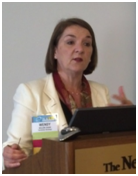Stealth Inclusion Explained
When I developed the concept of ‘stealth inclusion’ it was (and is) intended to help those in the C-suite who resist diversity efforts and whose approval and support every successful diversity and inclusion effort requires, to participate in educational sessions where they can personally experience transformation. Often, members of the C-suite are white, heterosexual, affluent, educated, and male and so; this methodology particularly pertains to those among their ranks who are uncomfortable around issues of diversity and inclusion. Through interactive exercises designed to facilitate increased self-awareness and empathy, participants’ resistance to the concept of diversity and inclusion is diminished. It is as a result of the transformative process that we are able to create change in the workplace and our society as a whole.
Every successful leader needs excellent communication skills and a highly developed self-awareness. These competencies have elements of diversity and inclusion woven through them. One way that those who resist inclusion have been able to undermine its advancement is by stigmatizing and minimizing diversity and inclusion programs, including the terminology used in those programs. I posit that we need to have diversity and inclusion education as part of all leadership development initiatives, even if that education goes by a different name. Hence, the content for an educational session on effective leadership would necessarily include interactive exercises on the challenges of overcoming barriers to inclusion.
As I am sure you are aware, these are complex subjects and as such need to be handled with sensitivity and care. The ability to successfully facilitate these educational sessions (I do not refer to them as training as we are not training participants in a skill, such as how-to operate a cell phone), is predicated on highly developed competencies in the areas of adult education, E.E.O., and diversity and inclusion.
I have facilitated hundreds of these sessions with consistent success, often as the result of clients asking me to attempt to repair damage rendered by possibly well-intentioned consultants who did not have the requisite competencies, skills and experience. Diversity and inclusion practitioners may each have different approaches to the work that we do and certainly should have different perspective, but we all need to insist that the caliber and standard of our work is impeccable. This is one way that we can overcome some of the resistance to the work that we do. Another is to understand who it is that we critically need to reach if we hope to create sustainable change and how to best do so. It is in this light that I developed the concept of ‘Stealth Inclusion.’
Onward!
~ Wendy
Please let me know what you think in the comment section below or email me: wendy@inclusionstrategy.com
Please follow us on Twitter for more frequent observations and information. 













